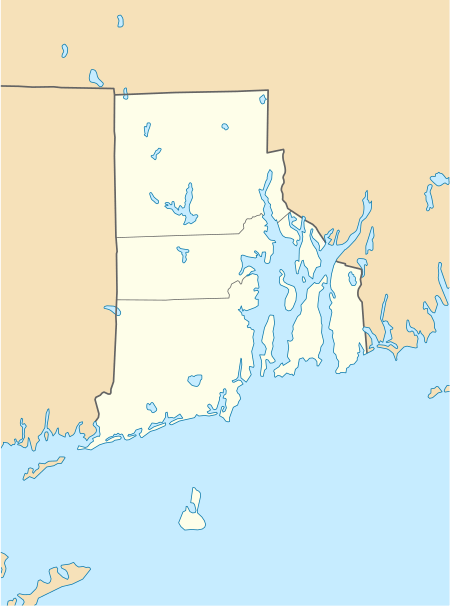Bellevue Avenue/Casino Historic District
The Bellevue Avenue/Casino Historic District encompasses a one-block section of Bellevue Avenue in Newport, Rhode Island. Although Bellevue Avenue is best known for the large number of Gilded Age mansions which line it, this block is a coherent collection of commercial buildings at the northern end of the mansion row. It is anchored around the Newport Casino, now the International Tennis Hall of Fame, and includes three other buildings on the east side of Bellevue Avenue between Memorial Boulevard and East Bowery Street.
Bellevue Avenue/Casino Historic District | |
U.S. National Historic Landmark District Contributing Property | |
.jpg) Audrain Building on the right, Casino on the left, King Block in between | |
  | |
| Location | 170-230 Bellvue Avenue, Newport, Rhode Island |
|---|---|
| Coordinates | 41°28′57″N 71°18′28″W |
| Area | 8 acres (3.2 ha) |
| Architect | Multiple |
| Architectural style | Shingle Style |
| Part of | Bellevue Avenue Historic District (ID72000023) |
| NRHP reference No. | 72000024[1] |
| Significant dates | |
| Added to NRHP | December 08, 1972 |
| Designated NHLDCP | December 8, 1972 |
History
The district was listed on the National Register of Historic Places in 1972,[1] and is completely contained within the National Historic Landmark District Bellevue Avenue Historic District.[2]
The first building on the block was the Travers Building, 170-184 Bellevue, which was designed by Richard Morris Hunt and built in 1870-71 for William Travers. It is a 2-1/2 story brick structure, with applied half-timbering and topped by a mansard roof. It houses ten storefronts.
The Newport Casino was built second, and its facilities occupy most of the block east of Bellevue Avenue. A National Historic Landmark, it was designed by McKim, Mead and White, and built in 1879-81.
The King Block (204-214 Bellevue) was designed by Perkins and Betton of Boston, Massachusetts and built for Leroy King. It is faced on brown brick and houses six storefronts, and is situated just south of the Casino.
The Audrain Building (220-230 Bellevue) completes the block; it was designed by Bruce Price of New York City and built in 1902-3 for Adolf Audrain. It is also divided into six storefronts, set off from each visually by arches.[2]
See also
| Wikimedia Commons has media related to Bellevue Avenue/Casino Historic District. |
References
- "National Register Information System". National Register of Historic Places. National Park Service. March 13, 2009.
- "NRHP nomination for Bellevue Avenue Historic District". National Park Service. Retrieved 2014-11-04.